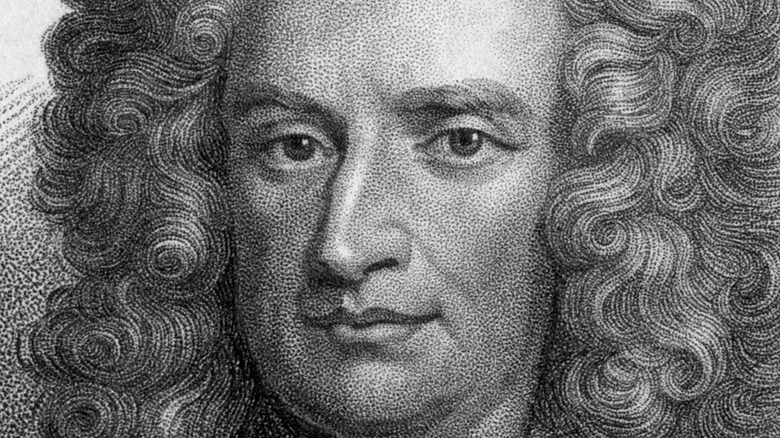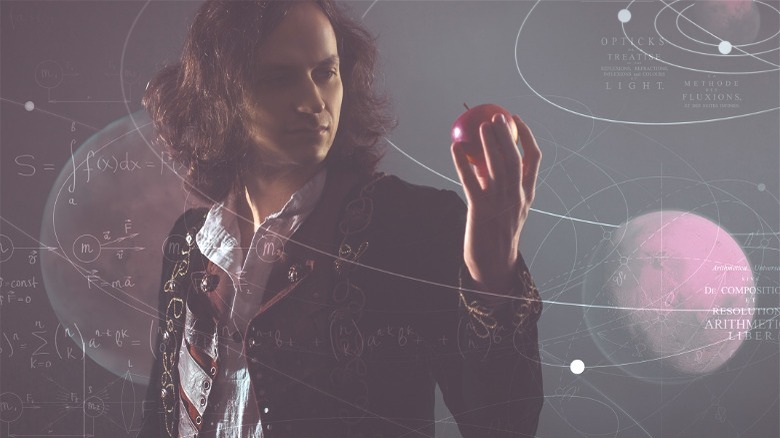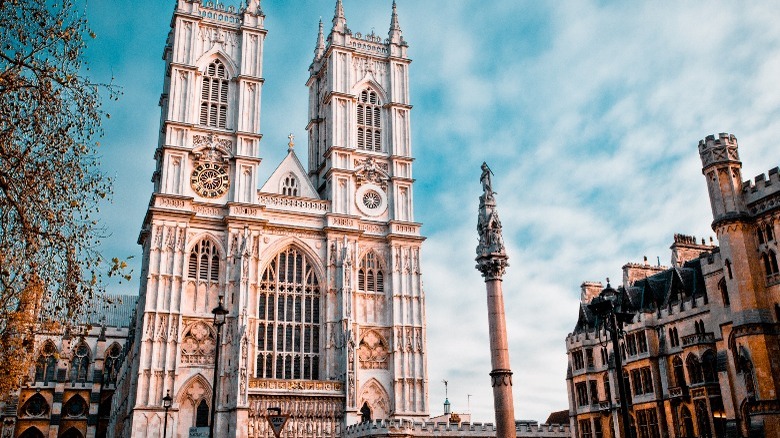Here's Where You'll Find Sir Isaac Newton's Body
During the 17th and 18th centuries Europe experienced a philosophical awakening that is now known as the Age of Enlightenment (per New World Encyclopedia). This particular movement marked a shift in societal thought away from superstition and religion and focused on reason. The Age of Reason gave rise to some of history's greatest thinkers, astronomers, mathematicians, and philosophers. Men like Francis Bacon, Voltaire, John Locke, and Jean-Jacques Rousseau dominated this era with their intellect, books, and discoveries.
Sir Isaac Newton — physicist, astronomer, mathematician, and author — was among the greatest thinkers of this time period was physicist (per History). He rose to prominence for his research and theories in mathematics, optics, mechanics, and astronomy, according to Westminster Abbey. The English prodigy was not afraid to explore the unknown and challenge what was the common knowledge of that day. He would go on to become one of the most respected minds of all time.
Early life and education
Isaac Newton was born the son of a farmer on January 4, 1643 in Woolsthorpe, England (per History). Sadly, his father sadly died before Isaac was even born, and despite his mother remarrying, Newton spent the majority of his childhood with his grandmother. Following an unsuccessful attempt to turn him into a farmer like his father, Newton began to pursue his education wholeheartedly.
Newton enrolled in Cambridge University's Trinity College in 1661, where he began studying a more classical curriculum. While there, he became more interested in the works of modern philosophers, which he then studied more intensely when the university was shut down in 1665 due to The Great Plague of London. That hiatus from his formal education afforded him the opportunity to begin to develop his theories on calculus, light, and gravity. Within two years of returning to school he created the first reflective telescope, received his Master's degree, and became Cambridge's Lucasian Professor of Mathematics.
At rest among the greats
Over the course of his life, Newton discovered and theorized over many things. Following his time at Cambridge, Newton discovered that white light exists on a spectrum of multiple colors, plotted the elliptical orbits of the planets, and published his book, "Philosophiae Naturalis Principia Mathematica" (Mathematical Principles of Natural Philosophy)." It was this publication that revealed Newton's most well-known theories, including his three laws of motion and his law of gravity (per History).
Newton was a brilliant man who during his lifetime challenged the status quo of beliefs across multiple disciplines. By the time he died on March 31, 1727, he was recognized as one of the greatest scientists, inventors, and writers of his day. For his contributions to society during his lifetime, he was buried in one of the most famous churches on Earth, Westminster Abbey in London. According to Guide London, Sir Isaac Newton is buried in what is called Scientist's Corner, along with more of the world's greatest minds, such as Charles Darwin and Stephen Hawking.


